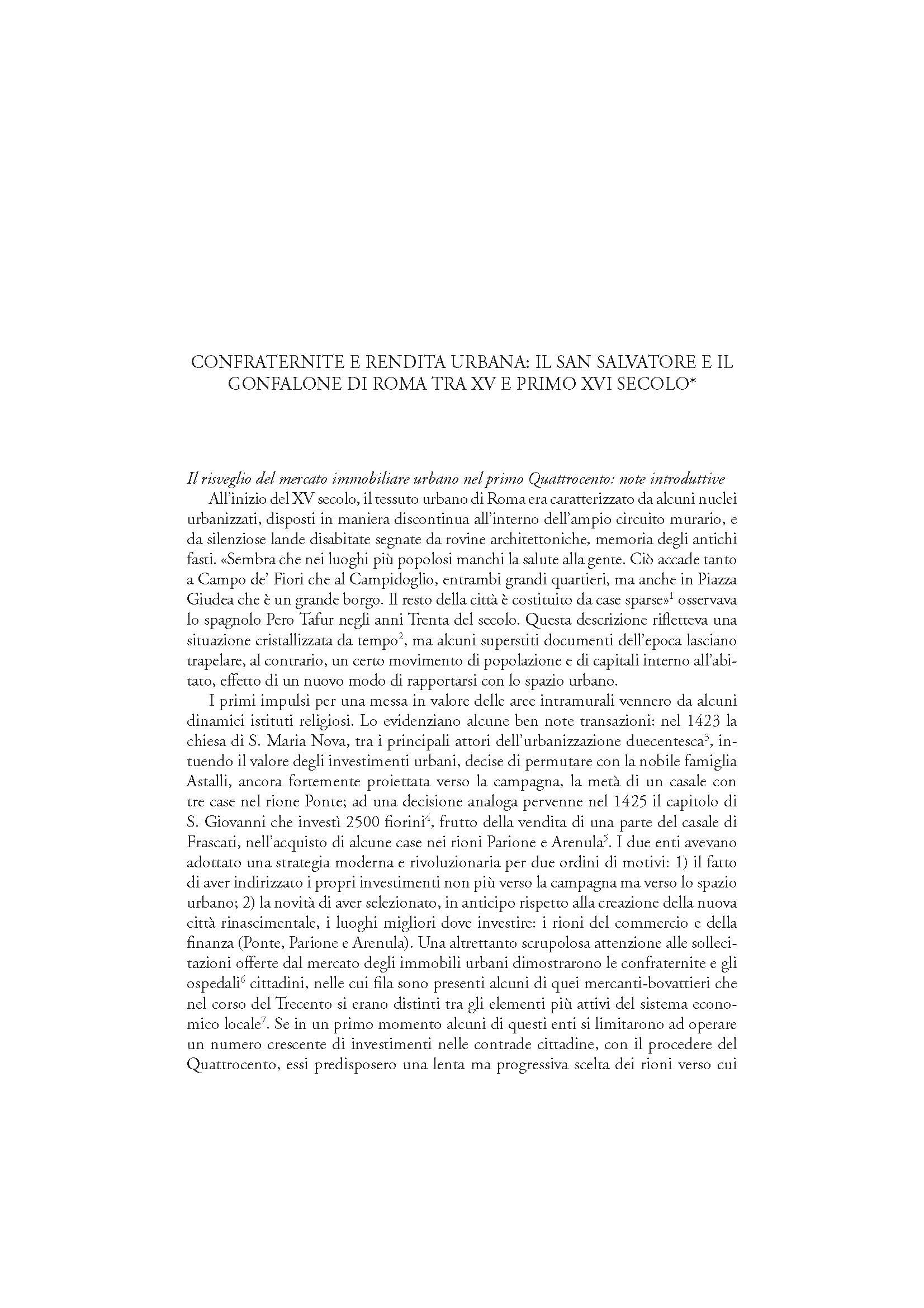Confraternite e rendita urbana: il San Salvatore e il Gonfalone di Roma tra XV e primo XVI secolo
6,00 €
The study analyses the progress of the real estate market in Rome between the fifteenth and sixteenth
century by means of the documentation of the Brotherhood of «San Salvatore» ad sancta sanctorum
and that of the «Gonfalone». In keeping with some of the most powerful ecclesiastic institutions,
the two brotherhoods were among the first to invest in the development of urban real estate, anticipating,
each in its own way, the up-turn in the city’s economics. The buying and selling of houses and
land for construction as well as for the rental market became part of the variables capable of recording
Rome’s new economic vitality during the Renaissance. These were the years of the pontiffs’ return after
the parenthesis in Avignon; it was the period of the humanist popes who favored Rome’s material and
intellectual rebirth; it was also the moment of the city’s great demographic growth and its affirmation as
an important multiethnic center. This was reflected not only in the increase of the number of transactions
but also in the improvement and development of property, in view of an increase of revenue, thus
establishing areas of potentially high income and others of lower potential.
The study analyses the progress of the real estate market in Rome between the fifteenth and sixteenth
century by means of the documentation of the Brotherhood of «San Salvatore» ad sancta sanctorum
and that of the «Gonfalone». In keeping with some of the most powerful ecclesiastic institutions,
the two brotherhoods were among the first to invest in the development of urban real estate, anticipating,
each in its own way, the up-turn in the city’s economics. The buying and selling of houses and
land for construction as well as for the rental market became part of the variables capable of recording
Rome’s new economic vitality during the Renaissance. These were the years of the pontiffs’ return after
the parenthesis in Avignon; it was the period of the humanist popes who favored Rome’s material and
intellectual rebirth; it was also the moment of the city’s great demographic growth and its affirmation as
an important multiethnic center. This was reflected not only in the increase of the number of transactions
but also in the improvement and development of property, in view of an increase of revenue, thus
establishing areas of potentially high income and others of lower potential.

